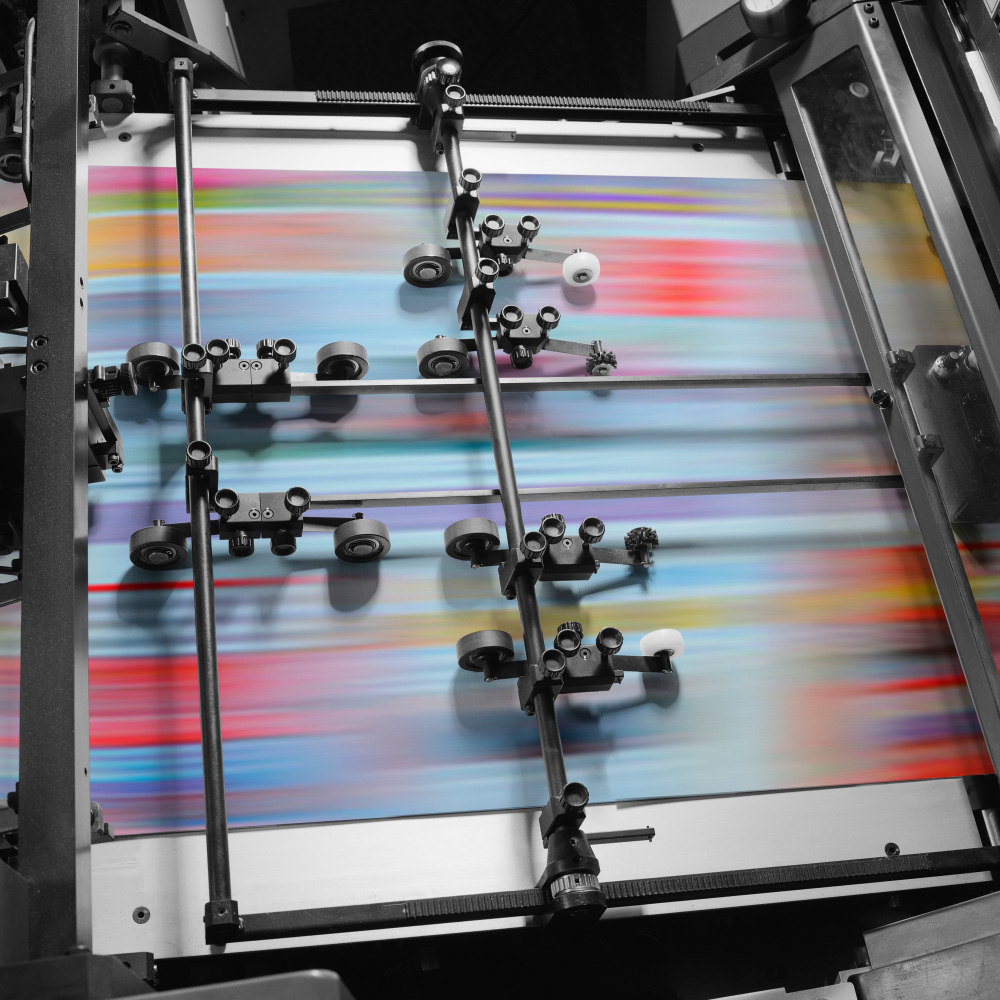
Flexo printing press is a machine that transfers ink using flexible printing plates. This technology is commonly used, especially in packaging and label printing. The working principle of the flexo printing press is effective and efficient, thanks to its ability to print at high speeds and on a wide variety of surfaces.
Here’s how the flexo printing machine works step by step:
- Ink Preparation
- Ink Preparation System: In the ink reservoir of the flexo printing press, the appropriate type of ink (water-based, solvent-based, or UV ink) is prepared for printing. The ink generally collects in a cylindrical chamber and is ready for printing.
- Ink Transfer: The prepared ink is taken from an anilox roller. The anilox roller controls the amount of ink and transfers it evenly to the printing plate.
- Printing Plate Preparation
- Plate Preparation: The printing plates used for flexo printing are generally made from photopolymer material and are flexible. The plate is placed on the press’s cylinder. The plate is shaped according to the print design using software or photomechanical methods.
- Ink Transfer: Ink is taken from the anilox roller and transferred to the printing plate. The raised areas of the plate are coated with ink.
- Printing Process
- Printing Cylinder: The ink-coated printing plate rotates on the printing cylinder, and the inked areas are transferred to the printing surface. These surfaces can be paper, plastic, fabric, or other materials.
- Printing Surface: The material to be printed (paper, plastic, foil, etc.) is fed through the system and comes into direct contact with the printing cylinder. During the printing process, ink is transferred from the printing plate.
- Post-Printing Processes
- Drying: Depending on the type of ink used in flexo printing, a drying process is applied after printing. Water-based inks dry faster, while solvent-based and UV inks may require different drying methods.
- Water-Based Ink: Dries by air.
- UV Ink: Dries quickly with UV light.
- Cutting and Packaging: After the printing process is completed, the printed materials can be cut and packaged in the desired format.
- Machine-Specific Features
- Speed and Efficiency: Flexo printing presses work at very high speeds and are suitable for high-volume printing. The printing speed can reach several thousand pages per minute.
- Multicolor Printing: Flexo presses are designed to print in multiple colors. The colored printing is done using different ink rollers placed in various sections of the machine.
- Plate Changing: Flexo printing presses allow for quick plate changes. This enables transitions between different print jobs with shorter production times and lower costs.
- Print Quality and Control
- Quality Control: To monitor print quality, the machine may include sensors and tracking systems. These systems monitor color density, ink transfer, and overall quality during printing. If any errors or inconsistencies are detected, the machine can automatically stop or be corrected.
- Color and Ink Management: Color management plays an important role in flexo printing presses. Color accuracy and smooth ink transfer are crucial for high-quality printing.
Advantages of the Flexo Printing Press:
- High speed and efficiency: Produces excellent results for long-duration printing jobs.
- Ability to print on a wide variety of surfaces: Allows printing on flexible materials (plastic, paper, cardboard, fabric, etc.).
- Eco-friendly: Environmentally friendly inks, such as water-based and UV inks, can be used.
- Cost-effective: Provides a low-cost solution for high-volume printing jobs.
- Multicolor printing: Multiple colors can be printed at the same time, which is especially advantageous in the packaging industry.
The flexo printing press, with its flexible printing plates and high-speed ink transfer systems, is an efficient technology capable of printing over large areas. With fast production, the ability to print in multiple colors, and the ability to print on different surfaces, it is preferred. These machines are commonly used in packaging and label printing.









































